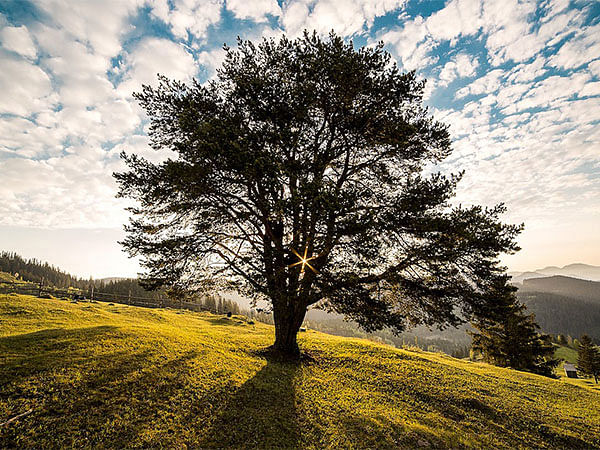Washington [US], October 30 (ANI): A cryptic, unexpected, and possibly disastrous type of cosmic occurrence has been further clarified by recent research.
To learn more about radiation “storms,” a team from UQ’s School of Mathematics and Physics led by Dr Benjamin Pope used data from millennia-old trees and cutting-edge statistics.
“These huge bursts of cosmic radiation, known as Miyake Events, have occurred approximately once every thousand years but what causes them is unclear,” Dr Pope said.
“The leading theory is that they are huge solar flares.”
“We need to know more because if one of these happened today, it would destroy technology including satellites, internet cables, long-distance power lines and transformers.”
“The effect on global infrastructure would be unimaginable.”
Introducing the humble tree ring
Qingyuan Zhang, the first author and a UQ undergraduate math student, created software to analyze all of the tree ring data that was accessible.
“Because you can count a tree’s rings to identify its age, you can also observe historical cosmic events going back thousands of years,” Mr Zhang said.
“When radiation strikes the atmosphere it produces radioactive carbon-14, which filters through the air, oceans, plants, and animals, and produces an annual record of radiation in tree rings.”
“We modelled the global carbon cycle to reconstruct the process over a 10,000-year period, to gain insight into the scale and nature of the Miyake Events.”
The common theory until now has been that Miyake Events are giant solar flares.
“But our results challenge this,” Mr Zhang said.
“We’ve shown they’re not correlated with sunspot activity, and some actually last one or two years.
“Rather than a single instantaneous explosion or flare, we may look at a kind of astrophysical ‘storm’ or outburst.”
According to Dr. Pope, it is extremely unsettling that scientists do not fully understand Miyake Events or how to forecast their recurrence.
“Based on available data, there’s roughly a one per cent chance of seeing another within the next decade.
“But we don’t know how to predict it or what harms it may cause.
“These odds are quite alarming, and lay the foundation for further research.”
Published in Proceedings of the Royal Society A is the research.
Utkarsh Sharma and Jordan Dennis, two undergraduates studying math and physics, also contributed to the study’s completion. The project was funded by a charitable gift from the Big Questions Institute to UQ. (ANI)
This report is auto-generated from ANI news service. ThePrint holds no responsibility for its content.




